This post may contain affiliate links. Affiliate links use cookies to track clicks and qualifying purchases for earnings. Please read my Disclosure Policy, Terms of Service, and Privacy policy for specific details.
Most typically developing children are ready and able to potty train sometime between 2 1/2 and 3 years of age. If you wait until a child is ready, they will likely potty train themselves over a few days. This has been my experience with most of my own children. There are things you can do to support the child in the potty training process. This article describes tips for potty training success in children who meet developmental milestones and additional ideas for children who have barriers to potty training success.
Strategies for Success
A Potty Chair
Sitting on a large toilet designed for adult bottoms can feel unstable and even scary for a toddler. A toddler-sized potty chair can help the child feel secure while attempting to eliminate. Allowing the child to pick out their own potty chair may also help them feel excited about potty training. If lighting or other parts of the bathroom (i.e., sounds, toilet flushing, etc.) seem bothersome for the child, placing the potty chair in the kitchen or other tiled area may also work.
For little boys, a training urinal is also an option. I bought this penguin urinal for my son who has extreme sensory sensitivities and it made the difference in potty training for him. This penguin urinal can attach to the tub wall with included suction cups. I currently have it attached to the bathroom wall with a push pin. It is incredibly easy to install and adjust the height for any child.
Once the child is using the potty chair, having a similar stable option for them while out in the community may also be necessary. With my second child, I had to carry a small potty chair with us when we were out until she felt comfortable on a normal toilet. Once again, I am carrying a potty chair around with me for my youngest who is potty trained as she is not quite comfortable on a full sized toilet. I bought this floor potty as it was the smallest I could find. It is still a little larger than I wanted, but it does fit in a large bag. I also bought this cute elephant travel urinal for boys.
Training Underwear
For my children and other children I have worked with, a critical potty training step is the natural physical feedback of feeling wet after eliminating. Pull-ups (as far as I know) and disposable diapers are designed to keep the child feeling dry. This is counterproductive when potty training. Instead, invest in some training underwear. I bought the Loveable Friends brand off of Amazon. They have sizes 12mo through 4T.
Make Your Own Training Underwear
If you are a sewer like me, making your own training underwear is an option. I have made some in the past, but ran out of time and bought the Loveable Friends brand training underwear. If you want to make your own, I have tried and liked two different patterns.
Stitch Upon a Time’s Children’s Scrundlewear pattern includes training underwear as part of the pattern and instructions. The sizes included range from 12 months to 12 years, so this pattern may be the only option for training underwear when attempting to toilet train a larger or older child.
New Conceptions Training Pants pattern uses flannel. I have used and liked these training underwear in the past. Once the flannel is conditioned, these underwear seemed to hold more urine than other trainers I have tried.
General Potty Training Procedure
For most of my children, potty training was as simple as giving them some training underwear, showing them the potty chair, and telling them to try and go in it. A few accidents and a few days later they were potty trained. When a child has an accident, help them change into dry clothes and underwear. Do not punish or get upset with accidents. This is a natural part of the learning process. If a child shows signs of readiness, potty training can be this simple. Signs of readiness may include knowing when when they are soiled, knowing while they are going, and knowing before they have to eliminate.
If potty training is not working out, it is okay to delay potty training 6 months or longer until the child shows more signs of readiness. You may also want to keep reading about some possible barriers to potty training and ideas on ways to overcome them.
Barriers to Potty Training
Sensory Sensitivities
Sensory sensitivities that may be a barrier to potty training may include noises (i.e., the sound of flushing toilets), lighting, or even the way underwear feels in comparison to a diaper.
If the bathroom is a problem, place the potty in another room. For children with noise sensitivities, wait to flush the toilet until the child is out of the room.
If the feel of underwear is a problem in comparison to the feel of a diaper, you could “practice” wearing underwear for short times and gradually increase the duration. When I was first potty training my highly sensory sensitive child (who was very resistant to wearing underwear), we started practicing wearing underwear for the first 10 minutes after going to the potty and gradually increased the time. I used a visual timer so he could see how long he had to wear the underwear before wearing a diaper again. After a few days, this child was in training underwear the full day and even preferred wearing underwear over a diaper.

 Not recognizing the body’s signals
Not recognizing the body’s signals
Receiving physical natural feedback of feeling wet is critical for learning to recognize the body’s signals. If you are in a home environment, training underwear will catch leaks (although not necessarily completely contain) and provide that immediate physical feedback. In other environments, this may not be practical. For one child I worked with, we put underwear under the pull-up* to provide the needed physical feedback.
*Be sure not to leave a child in soiled underwear. If you are putting underwear under a diaper or pull-up, check the child regularly (initially at least every 20-30 minutes) to make sure they are dry. If not, help them change. You can also keep track of times between wet and dry to pinpoint how long the child is holding their urine and to develop a schedule for taking the child to the bathroom.
It may also be helpful to describe what it feels like before you have to use the bathroom. For example, you could explain that you know you have to use the bathroom for a bowel movement because you feel pressure in your bottom.
Routine-oriented
Some children, including some autistic children, avoid changes in routine. Potty training is a change in routine. In order to overcome this barrier, you have to make using the potty part of the routine. A potty training activity schedule may help a child understand the process of using the bathroom. I have also been known to make video models (modestly, of course, where the actor is dressed but the view in the video is cut out to above the waist anyway) to go with a toileting activity schedule to demonstrate the sequence of what is expected.



I created these toileting activity schedules (using the Boardmaker computer program) to use with my children. A wanted flashlight was used as a reinforcer for attempting the sequence, but you could either leave that part off or use whatever item would be interesting for your child.
The Picture Communication Symbols ©1981–2016 by Tobii Dynavox. All Rights Reserved Worldwide. Used with permission.
Boardmaker® is a trademark of Tobii Dynavox.
Other Factors to Consider
If potty training is delayed (beyond the age of 4) and support strategies are not working, you may want to explore medical issues that may be preventing potty training. Check with your pediatrician for possible causes which may include constipation, food allergies, or encopresis.
Conclusion
Help a child in potty training by using training underwear and providing a safe and supportive environment to learn. Many children will train themselves over a few days if the parents wait until the child is ready. Other children may have barriers to potty training including sensory sensitivities and difficulty with changes in routine. These children can be supported by making gradual changes towards potty training including using a visual timer to practice wearing underwear, making accommodations for their sensory sensitivities, and by making an attempt to to potty part of the everyday routine.






